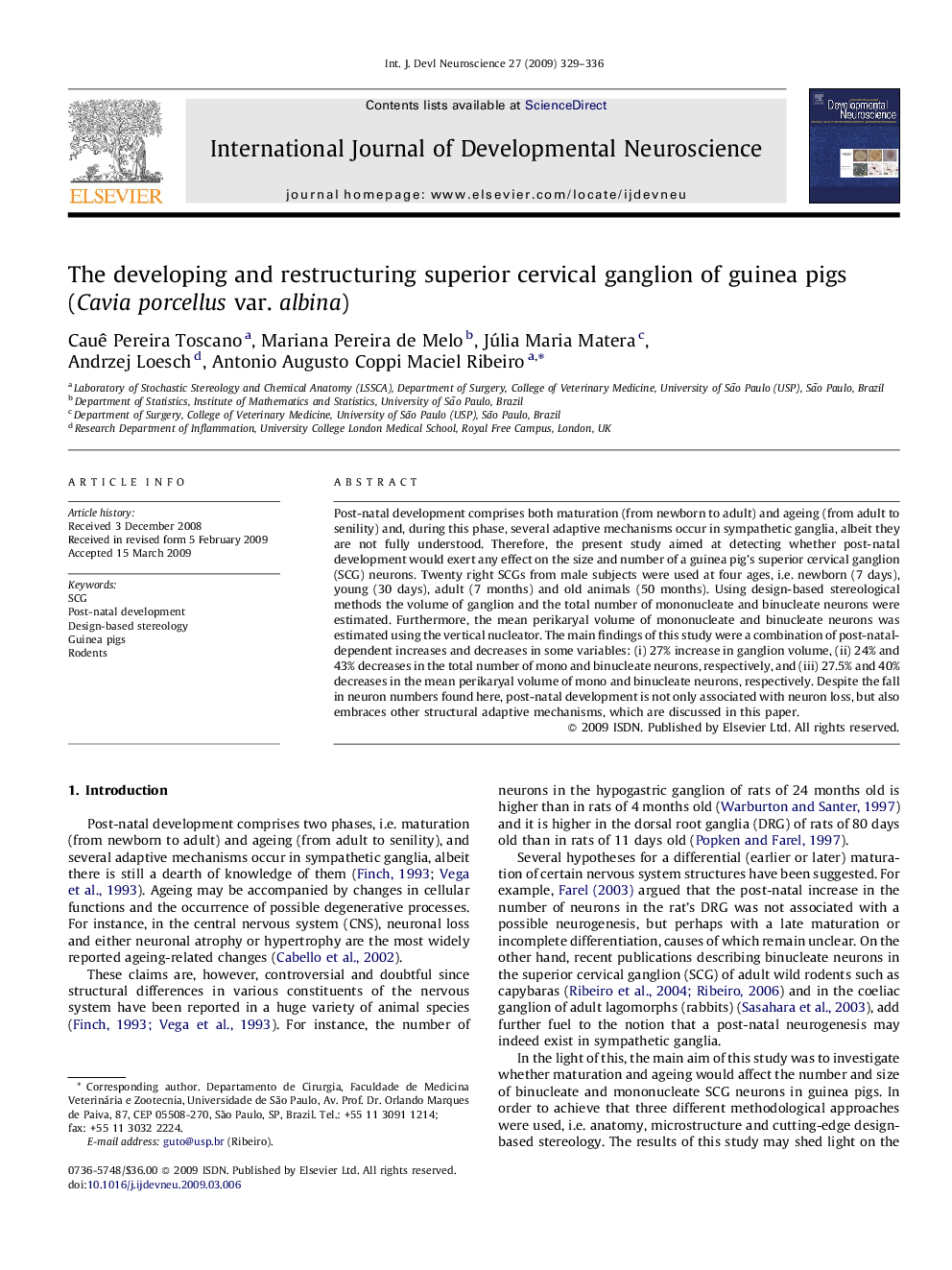| Article ID | Journal | Published Year | Pages | File Type |
|---|---|---|---|---|
| 2786964 | International Journal of Developmental Neuroscience | 2009 | 8 Pages |
Abstract
Post-natal development comprises both maturation (from newborn to adult) and ageing (from adult to senility) and, during this phase, several adaptive mechanisms occur in sympathetic ganglia, albeit they are not fully understood. Therefore, the present study aimed at detecting whether post-natal development would exert any effect on the size and number of a guinea pig's superior cervical ganglion (SCG) neurons. Twenty right SCGs from male subjects were used at four ages, i.e. newborn (7 days), young (30 days), adult (7 months) and old animals (50 months). Using design-based stereological methods the volume of ganglion and the total number of mononucleate and binucleate neurons were estimated. Furthermore, the mean perikaryal volume of mononucleate and binucleate neurons was estimated using the vertical nucleator. The main findings of this study were a combination of post-natal-dependent increases and decreases in some variables: (i) 27% increase in ganglion volume, (ii) 24% and 43% decreases in the total number of mono and binucleate neurons, respectively, and (iii) 27.5% and 40% decreases in the mean perikaryal volume of mono and binucleate neurons, respectively. Despite the fall in neuron numbers found here, post-natal development is not only associated with neuron loss, but also embraces other structural adaptive mechanisms, which are discussed in this paper.
Related Topics
Life Sciences
Biochemistry, Genetics and Molecular Biology
Developmental Biology
Authors
Cauê Pereira Toscano, Mariana Pereira de Melo, Júlia Maria Matera, Andrzej Loesch, Antonio Augusto Coppi Maciel Ribeiro,
